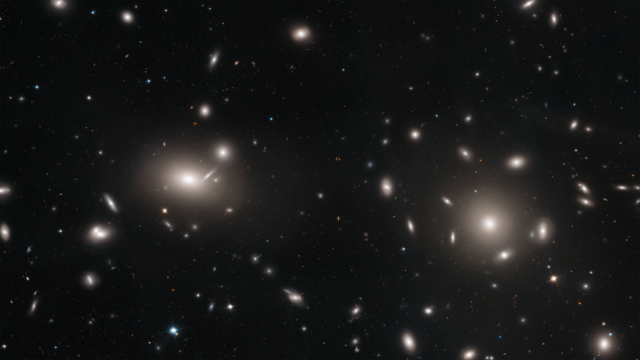Space Swoon: Hubble captures the beauty of the Coma Cluster’s 1,000 galaxies
Check out this goddamn sublime glory. Over 1,000 galaxies. Over 300 million light-years from Earth.
NASA:
This Hubble Space Telescope mosaic is of a portion of the immense Coma cluster of over 1,000 galaxies, located 300 million light-years from Earth. Hubble’s incredible sharpness was used to conduct a comprehensive census of the cluster’s most diminutive members: a whopping 22,426 globular star clusters. Among the earliest homesteaders of the universe, globular star clusters are snow-globe-shaped islands of several hundred thousand ancient stars. The survey found the globular clusters scattered in the space between the galaxies. They have been orphaned from their home galaxies through galaxy tidal interactions within the bustling cluster. Astronomers will use the globular cluster field for mapping the distribution of matter and dark matter in the Coma galaxy cluster.The study, published in the November 9, 2018, issue of The Astrophysical Journal, will allow for astronomers to use the globular cluster field to map the distribution of matter and dark matter in the Coma galaxy cluster.




